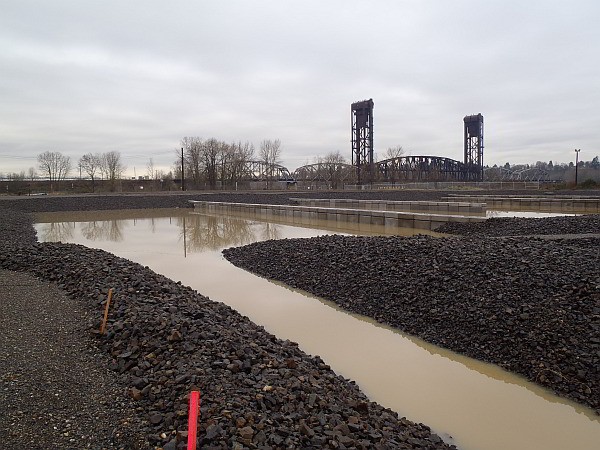Stormwater Source Control: Willamette River, Oregon
By Andrew J. Halmstad, P.E., Senior Consultant

OUR CHALLENGE
At the inactive Arkema facility, part of the Portland Harbor Superfund site, DDT from past manufacturing remained in upland soil and was potentially vulnerable to transfer to the river via stormwater. The Oregon Department of Environmental Quality (DEQ) and EPA required stormwater source control measures meet both federal criteria for sediment cleanup under CERCLA and state ambient water quality standards under the Clean Water Act—an ambitious challenge.
OUR APPROACH
Our design goal was to eliminate DDT in all stormwater discharge to the Willamette River from the 55-acre site utilizing a passive treatment system—a previously unproven standard. Our system design included decommissioning of existing stormwater lines, temporary capping of DDT-impacted soils, and stormwater detention and sand filtration prior to discharge to the river.
OUR IMPACT
System operation has been a success—100 percent of site stormwater is treated, and DDT effluent concentrations have decreased more than 96 percent (meeting the goal of 50 nanograms per liter). The system requires little O&M and no power. DEQ featured the system and collaborative effort in a Portland Harbor source control .video

